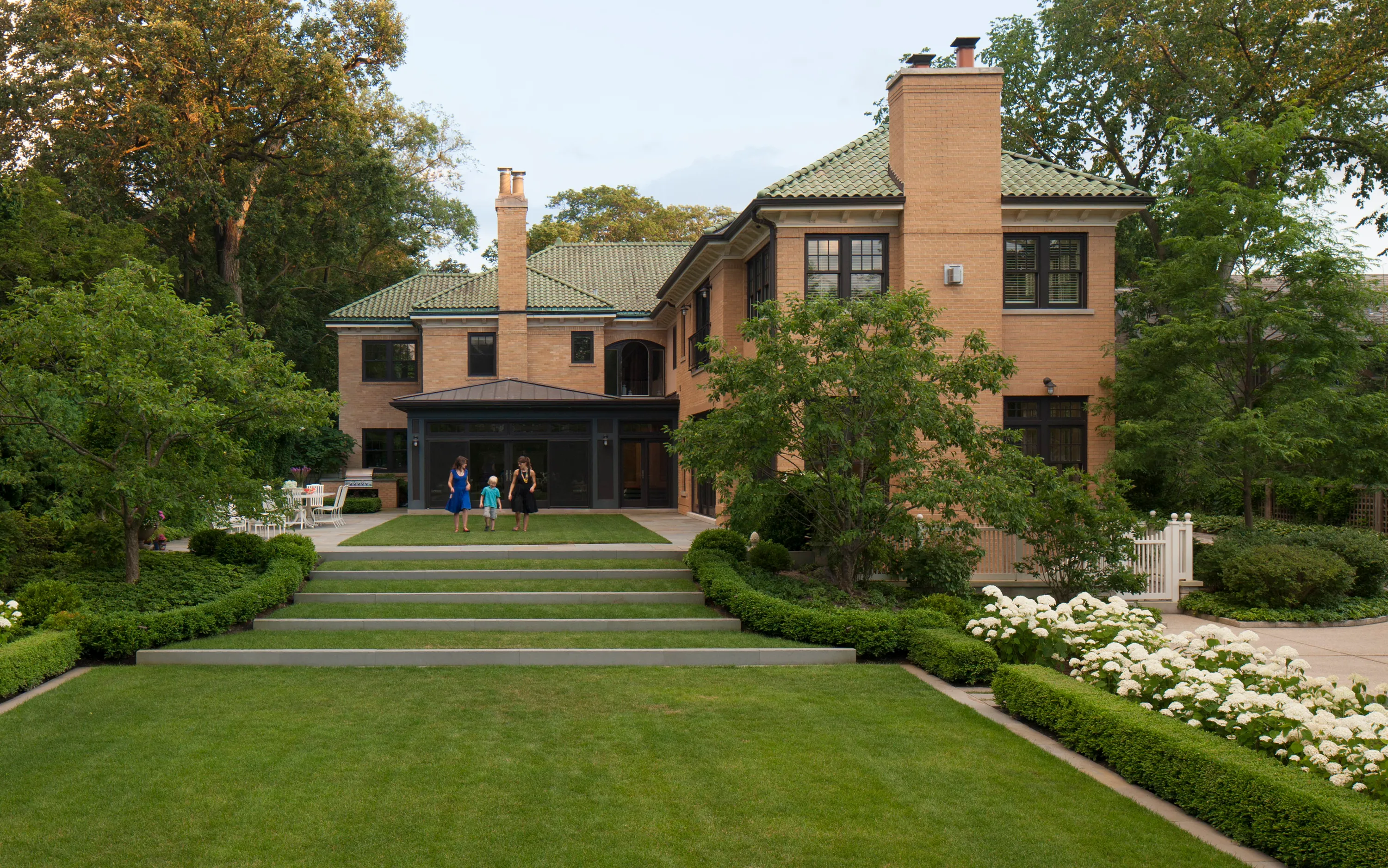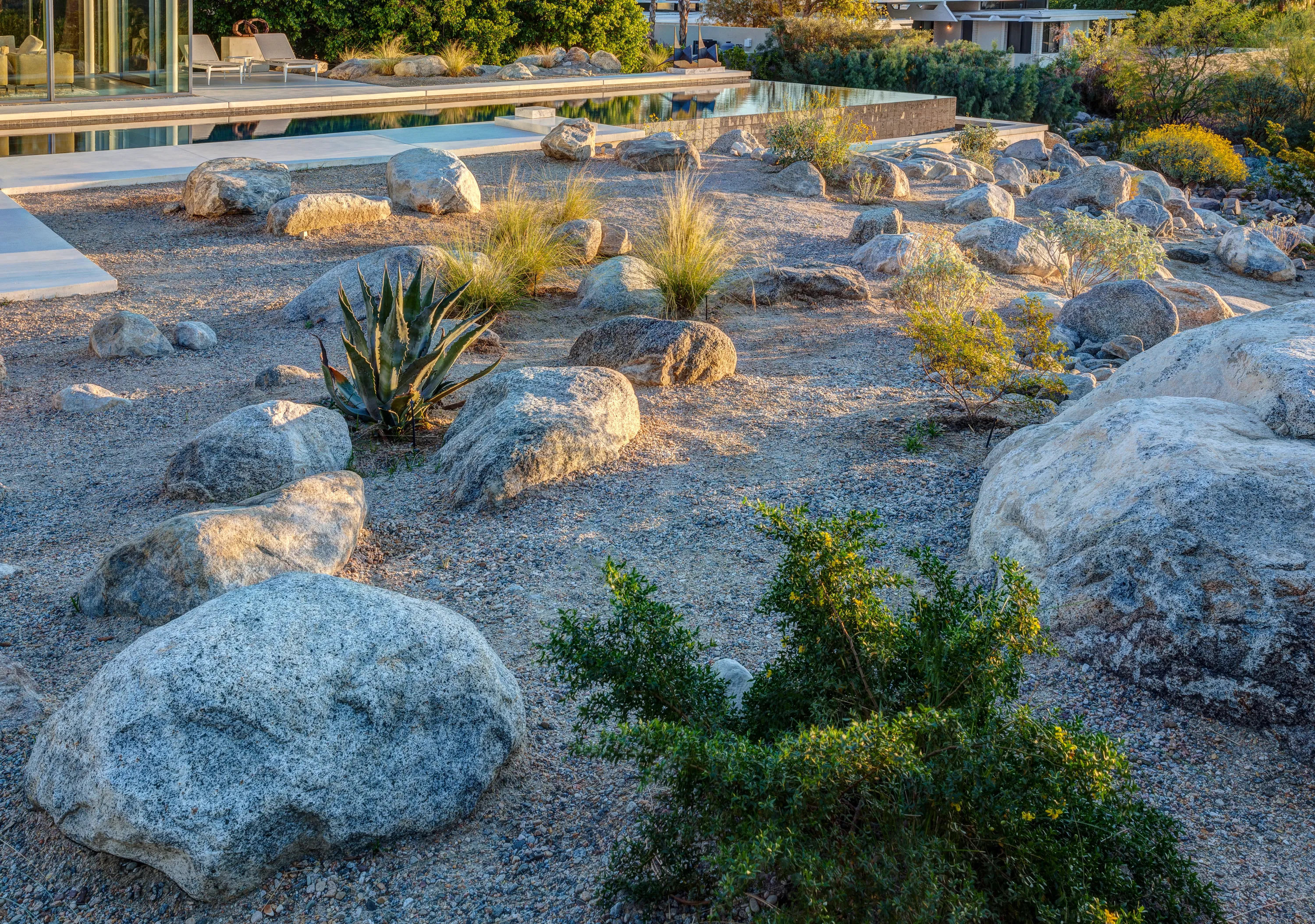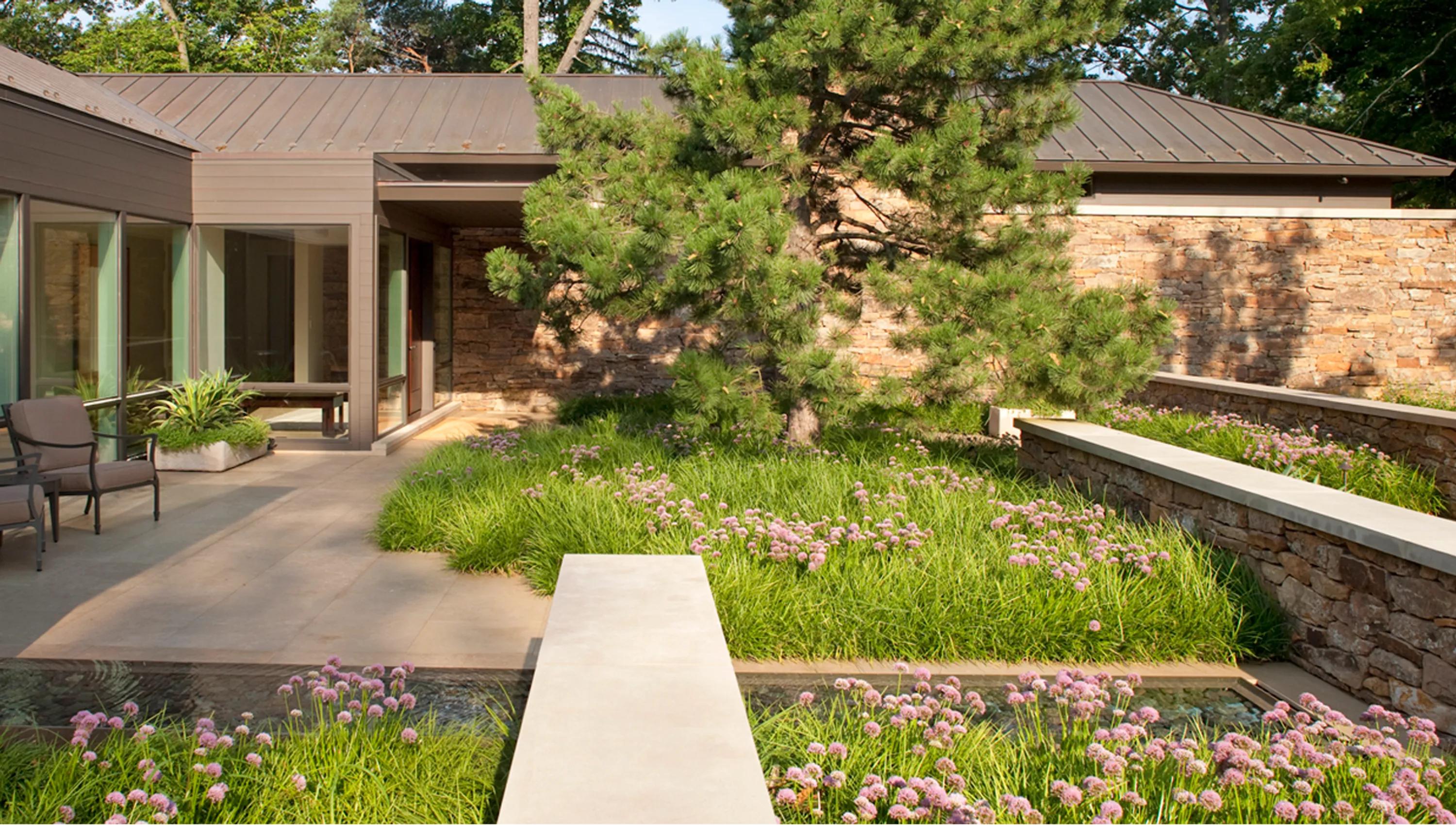LET YOUR GARAGE ENHANCE OUTDOOR LIVING
Most classically beautiful gardens incorporate some sort of structure to give shelter, frame a view, or provide a destination. In small lots, adding something like this gets tricky, so your best bet is to utilize a feature that may already be there. For many, this would be the garage.
Since garages are used only for storage or parking and are usually unattractive, the typical strategy for landscaping around a garage is to hide it with foundation plantings. But take a second look. There are huge advantages to co-opting a garage into the garden scheme by treating it as a theatrical backdrop for an outdoor living space. Changes that can be made include enlarging the entry door, incorporating vertical greening, or adding a faux porch. Stylish alterations can imbue a service building with personality and charm, turning it from intruder to welcome addition. The benefits of such improvements go beyond cosmetic—they can reinvent the way you use and enjoy the garden. Keep reading “Co-Opt Your Garage.” (Organic Gardening, January 2014)
SIX TIPS FOR SUCCESSFUL SHADE GARDEN DESIGN
Most gardens and landscapes have some areas in shade, which can range from wet, dry, root-infested, or dappled to the worst case, which is closetlike darkness. Correctly assessing what you have to work with is more than half the battle. Since this is a national magazine, I won’t begin to describe specific plants. There are dozens of great resources for finding the right plant to suit each of these types of shade in your specific region, including your local botanic garden, arboretum, garden center, or favorite nursery. Instead, I’ll outline a few ways to think about shade that will, I hope, help you get the maximum value for the time and money spent taking on one of the toughest challenges gardeners face. Keep reading “Don’t Be Afraid of the Dark.” (Organic Gardening, June/July 2013)







